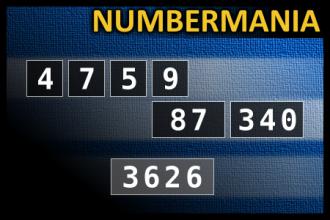Calculate the number 3626
NUMBERMANIA: Calculate the number 3626 using numbers [4, 7, 5, 9, 87, 340] and basic arithmetic operations (+, -, *, /). Each of the numbers can be used only once.
7 short jokes for a good Tuesday
I asked my friend when his birthday was, and he said, "March 1st".
So I walked around the room like a soldier and asked him again.
I left my job today. I couldn’t work for that man after what he said to me.
He said: "you’re fired."
My wife and I were walking through the park today and we passed a large groups of nuns.
I said wow what an opportunity for a joke, but I’ve got none.
Daughter: "How do I look, Dad?"
Me: "With your eyes, sweetie."
A dad went into his 13 yr old daughter's bedroom to find her smoking.
"How long have you been smoking?" he shouted.
"Since I lost my virginity," she replied.
"You lost your VIRGINITY?" he shrieked. "When the hell did this happen?"
The daughter replied, "No idea, I was drunk!"
A sweet old lady on a bus offers the driver some peanuts. He eats a few and asks her why she isn't having any herself.
"Oh they're too hard on my poor teeth, I couldn't."
"Why did you buy them all then?" wonders the driver.
"You see, I just love the chocolate they're covered in!"
"Come into the bedroom and I'll show you a good time," I said to the wife.
When she came up I showed her pictures of me and my mates before I met her!

